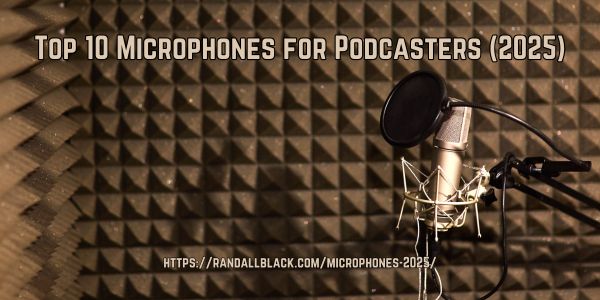1. Shure MV7+
Pros:
- Dual USB and XLR connectivity for versatile use
- Built-in headphone monitoring
- Touch panel controls for gain, monitoring levels, and mute
Cons:
- Higher price point
- May require software for full functionality
2. Shure MV6
Pros:
- Affordable entry into Shure’s microphone lineup
- USB connectivity for plug-and-play use
- Solid build quality
Cons:
- Lacks XLR connectivity
- Limited onboard controls
3. Audio-Technica AT2040
Pros:
- Broadcast-quality sound at an affordable price
- Hypercardioid polar pattern for excellent isolation
- Internal shock mount minimizes handling noise
Cons:
- XLR only; requires an audio interface
- May need additional accessories like a pop filter
4. Blue Yeti USB Microphone
Pros:
- Multiple pickup patterns (cardioid, omni, bidirectional, stereo)
- Plug-and-play USB connectivity
- Built-in gain control and mute button
Cons:
- Picks up background noise in untreated rooms
- Bulky design
5. RØDE PodMic USB
Pros:
- Designed specifically for podcasting
- Excellent build quality
- USB connectivity for easy setup
Cons:
- Heavier than some competitors; requires a sturdy stand
- Limited onboard controls
6. Razer Seiren Mini
Pros:
- Affordable price point
- Compact and stylish design
- Supercardioid pickup pattern reduces background noise
Cons:
- No onboard controls (gain, mute)
- Fixed stand; limited adjustability
7. Samson Q2U
Pros:
- Dual USB and XLR connectivity
- Affordable with good sound quality
- Built-in headphone jack for monitoring
Cons:
- Lacks the warmth of higher-end mics
- Plastic build feels less durable
- Basic design and limited features
8. Electro-Voice RE20
Pros:
- Industry-standard for broadcasting
- Reduces proximity effect; clear at close range
- Excellent bass response
Cons:
- Expensive
- XLR only; requires an audio interface
- Heavy; requires a solid stand
9. Audio-Technica AT2020
Pros:
- Affordable and great for beginners
- Clear and accurate sound
- Available in both XLR and USB versions
Cons:
- Picks up background noise easily
- Not as rich as higher-end models
- No built-in controls (gain or mute)
10. Shure SM7B
Pros:
- Excellent sound quality for vocals
- Built-in pop filter
- Great for untreated rooms
- Ideal for deep, rich voice capture
Cons:
- Requires a lot of gain; may need a preamp or cloudlifter
- Expensive
- XLR only; no USB option
Summary:
- Best for Beginners: Samson Q2U, Razer Seiren Mini, Audio-Technica AT2020
- Best for Professionals: Shure SM7B, Electro-Voice RE20, Audio-Technica AT2040
- Best Budget Option: Razer Seiren Mini, Samson Q2U
- Best USB Mic: Blue Yeti, RØDE PodMic USB
- Best High-End Option: Shure SM7B, Electro-Voice RE20
